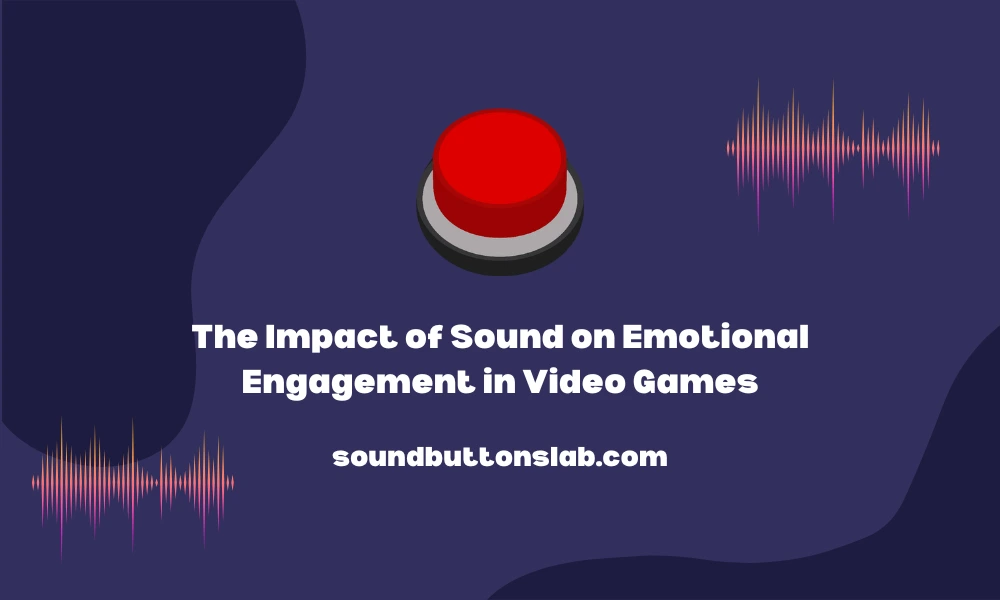The sound design in video games is more than just background noise; it's a crucial element that significantly impacts the player's emotional engagement and overall experience. From the eerie silence of a haunted mansion to the triumphant blare of victory music, sound can shape a game's atmosphere and influence player emotions. In this article, we delve into how sound design enhances emotional engagement in video games, exploring various techniques and providing compelling examples.
1. The Role of Sound in Creating Atmosphere
Sound is a powerful tool for creating and enhancing the atmosphere in video games. Ambient sounds, background music, and sound effects work together to immerse players in the game world.
For instance, in horror games like "Resident Evil" or "Silent Hill," the use of unsettling ambient sounds and sudden, jarring noises heightens the sense of dread and tension. Conversely, in adventure games like "The Legend of Zelda," uplifting and adventurous music encourages a sense of exploration and excitement.
2. Emotional Cues Through Music
Music is a universal language that can convey a wide range of emotions. In video games, music is often used to signal emotional cues to the player. A well-composed soundtrack can evoke feelings of joy, sadness, tension, or triumph. Consider the Final Fantasy series, where the music changes dynamically to reflect the emotional tone of the story. Players can also enhance their gaming experience by adding the best music sounds from top music soundboard lists, ensuring the perfect soundtrack for any moment.
The iconic "Prelude" theme, with its serene and hopeful melody, contrasts sharply with the intense and dramatic battle themes, guiding players' emotions throughout their journey.
3. Dynamic Soundscapes
Dynamic soundscapes adjust to the player's actions and in-game events, creating a responsive and immersive experience. This technique is particularly effective in action and adventure games, where the music and sound effects shift in real time based on the player's situation.
For example, in The Last of Us, the music and ambient sounds change depending on whether the player is exploring, engaging in combat, or experiencing a narrative moment. This adaptability enhances the emotional impact and keeps players deeply engaged. Players can also explore a game soundboard to find and customize sounds that enhance their gaming experience.
4. Character and Environmental Sounds
Sound design also plays a crucial role in bringing characters and environments to life. Unique sound effects for different characters can help establish their identity and emotional state. In "Overwatch," each hero has distinct sounds for their abilities, movements, and interactions, making them feel unique and memorable.
Environmental sounds, such as the rustling of leaves, the clanging of machinery, or the chatter of NPCs, contribute to the believability of the game world and enhance the player's immersion.
5. Silence as a Sound Design Tool
Silence, or the deliberate absence of sound, can be a powerful tool in sound design. Strategic use of silence can create tension, emphasize certain moments, or give players a moment to reflect. In the game "Inside," the sparse use of sound and long periods of silence build a sense of unease and anticipation, making the player's experience more intense and emotionally charged.
6. Audio Accessibility
Inclusive sound design ensures that all players, including those with visual impairments, can fully experience the game's emotional depth. Games like The Last of Us Part II and Celeste include robust audio accessibility options, such as descriptive audio and sound cues that guide players through the game. Additionally, players can enhance their experience by adding the best soundtracks from top soundboard sites online and customizing their gameplay with high-quality audio.
These features not only make games more accessible but also enhance emotional engagement by allowing more players to connect with the game's narrative and atmosphere.
7. Memorable Soundtracks and Themes
A memorable soundtrack can leave a lasting emotional impact on players. Iconic game music, such as the "Super Mario" theme or the "Halo" main theme, often becomes ingrained in players' memories, evoking nostalgia and emotional connections long after the game is over.
These soundtracks contribute to the game's legacy and emotional resonance, making the experience more memorable and meaningful.
Conclusion
Sound design is an essential aspect of video game development that significantly enhances emotional engagement. Through atmospheric sounds, emotional music, dynamic soundscapes, and innovative audio techniques, game developers create immersive experiences that resonate with players on a deep emotional level.
As technology advances and sound design continues to evolve, its impact on emotional engagement in video games will only grow stronger, enriching the gaming experience for players worldwide.
